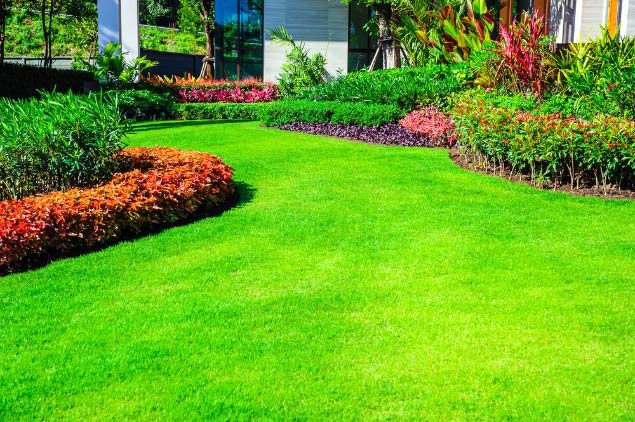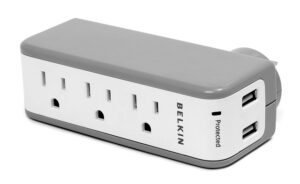Want to create the perfect lawn? It will enhance the overall appeal and value of your home! Besides, having a nice, well-kept lawn creates the perfect ambiance for outdoor activities with the kids and family as a whole. Then there’s plenty of time for relaxation and fun with guests.

Most homeowners desire a lush, green lawn and devote valuable time at weekends trying to create one. However, it’s ironic that while the rain and sun are essential for grass to grow, these natural elements often bring with them voracious bugs and lawn-choking weeds. Still, rather than become frustrated and consider Astroturf as an alternative, you should follow these guidelines to create the perfect lawn for your home and see the difference it makes.
1. Keep Your Mower Blades Sharp
Make sure your grass is cut with sharp lawn mower blades. If your grass doesn’t appear clean-cut and the blade tips have turned white, you’ll need to take action. Dull blades will leave your grass ripped up, with jagged ends that soon turn brown.
So, if you notice your blades becoming blunt, it’s time to get them sharpened. Occasionally, your mower will hit a rock, stick or scrapes the ground and that will always dull the blades.
2. Irrigate Before Dawn
There’s a technique to watering a lawn: do it before the sun rises. Setting your irrigation timer between 3 am and 5 am is ideal.
Watering before the suggested timeframe and you could find your lawn waterlogged, which could cause mold (mushrooms and fungus) to grow. If you do so after the sun rises, this could steam up the water and damage your grass. The water also evaporates quickly and your grass dries up.
3. Rake, Rake, and Rake
Raking is not really anyone’s favorite pastime, but if your goal is a great-looking lawn, you simply have to make time for it. Raking will get rid of leaves, twigs, seed pods, pine cones, and spent flowers that litter the ground.
It might not be immediately obvious, but debris of any type blocks sunlight. Light is key to the healthy growth of your grass. Debris will also dull your mower blade so just get rid of it!
4. Work on the Patches
Contrary to what you may have been made told, not every yellow spot or dead patch in your lawn is caused by rapacious bugs. Chemicals aren’t always the answer. Sometimes, the yellow spot is simply a result of low spots in your lawn, especially if you notice them after heavy rainfall. Your grass loves the rain, but too much can choke or rot the grass.
So, to fix the ugly bald spots in your lawn, spread a layer of compost over it and make sure to raise it up to the same level as the rest of the ground. You should have new grass growing in that spot within a week or two to fill that patch.
Keep out Lawn-damaging Skunks and Raccoons
Your cherished lawn may be your relaxation spot and your kids’ playfield during the day, but at night, it can also become the picnic ground for skunks and raccoons. These creatures are in search of grubs worms and other insects. Often, they create patches in your lawn and even big empty spaces with rolled-up tufts of grass that you’ll see in the morning. They’ll most likely pay a visit after it’s rained when the water forces their prey to the surface.
You might think the best way to solve skunk and raccoon problems is to perform extensive fumigation, put up electrified fencing or set some traps. However, there’s a simpler solution; simply purchase a few boxes of mothballs from your local home improvement store and spread them all over your lawn. As raccoons have sensitive noses, they will subsequently be put off from feeding on your lawn.
In addition, make sure your garbage cans are well secured, with lids firmly shut. Those with their contents spilling over – or that can be easily knocked over – are a big attraction for raccoons.
Check the Soil and Add Fertilizer
Get a DIY soil kit and perform a test to check its acidity or alkalinity to be sure the soil is suitable to grow the perfect lawn.
- If the test shows the soil is acidic, increase the pH level by adding pulverized lime to the lawn using a drop spreader.
- To reduce the alkaline content in the soil, if it’s moderately high, add organic material such as peat moss.
- If the pH level is very high, you can correct it with sulfur or iron sulfate.
Remember that fertilizer benefits all plants, including weeds. So, to ensure only your grass benefits, time your fertilizer application accordingly. Generally, early spring and mid to late autumn are the best time to fertilize the soil, but make sure not to overdo it. Also, don’t forget to clean fertilizer that falls on a paved surface, so that it doesn’t wash into bodies of water.
Adjust Your Mower Appropriately
Set your mover’s deck to the correct height. One-third of the grass is removed as you mow. Also, the frequency of mowing should be determined by the season. In early spring, it’s best to mow every four or five days, while you may not need to do any mowing in late summer if the grass stays dormant and stops growing.
If you trim the grass to low, you may also be mowing away soil nutrients for the grass, which can make your lawn look wilted and sickly. Also, when you time your mowing frequency effectively, it will produce small grass clippings, which can help produce extra soil nutrients when left to decompose on the lawn. The best electric mowers have plenty of motor power and cutting width to help you do an excellent job.
So, good luck, and enjoy the great outdoors with your perfect lawn!



